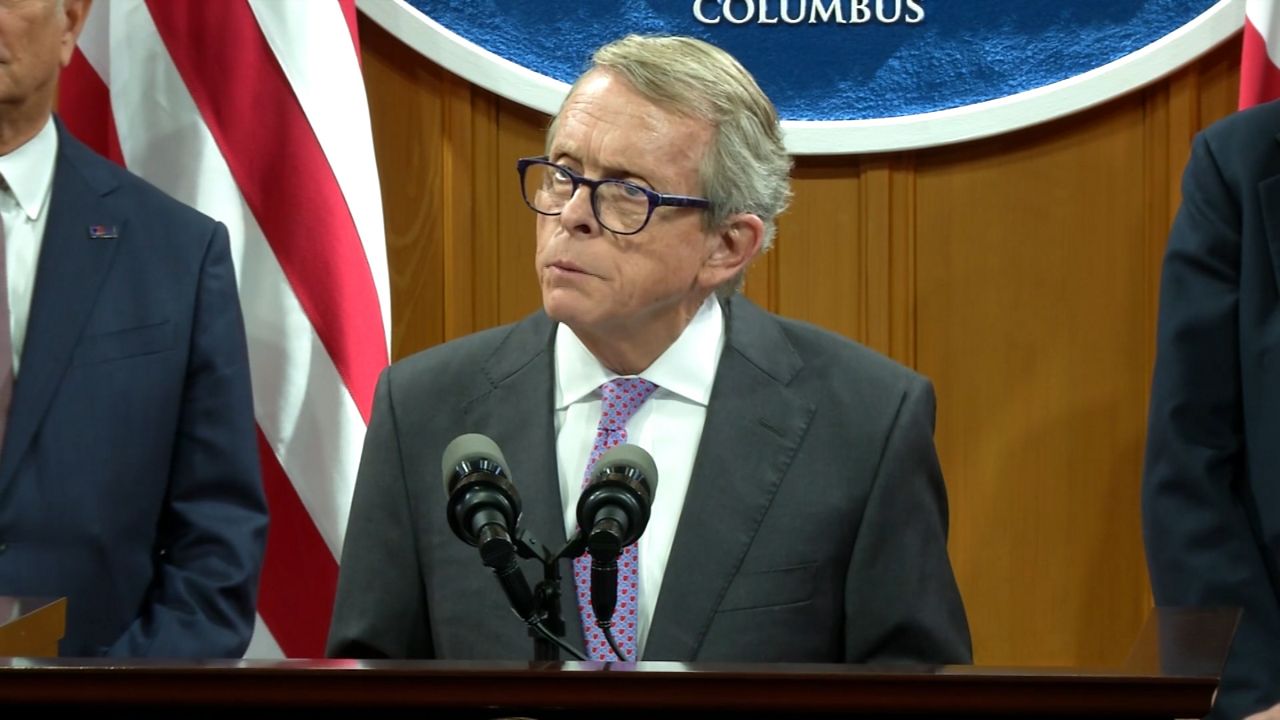COLUMBUS, Ohio — Gov. Mike DeWine shared a bleak update today on the status of COVID-19 in Ohio as the state reported a single-day record of new cases and a doubling in the last month of both the positivity rate and COVID-19 hospitalizations.
What You Need To Know
- Ohio reported 2,187 new cases Thursday, a new record
- Both the positivity rate and hospitalizations have doubled
- Many Midwest states are reporting record new daily case averages
Ohio reported 2,187 new cases Thursday, breaking a record set the day before of 2,039 cases. The state’s seven-day average of new cases is at a record high in Ohio, as it is in many Midwest states where spread of the virus is worsening.
“This virus is coming on really strong now, and it’s coming on strong all throughout the state of Ohio,” DeWine said.
The governor shifted his tone and walked back comments made last week in which he ruled out the possibility of a second shutdown of the state this winter. Case numbers have not risen to a point that would require new restrictions, DeWine said, but in his view it would be misguided to promise no restrictions could come if the outbreak continues to worsen.
“We don’t have any plans to do shutdowns, but no governor can stand up here during a pandemic and say, ‘Under no circumstances will we shut something down.’ That would be irresponsible,” DeWine said.
Fifteen counties moved into the “red” Thursday, including the state’s two most populous counties, Franklin and Cuyahoga. Two counties, Trumbull and Ashland, moved out of the red. DeWine said 65 percent of the state’s population is now living in the red in the 29 counties with that designation.
As of today, Ohio has 29 red counties. That is 65% of Ohioans who are living in red counties. pic.twitter.com/6XQtKKqpCb
— Governor Mike DeWine (@GovMikeDeWine) October 15, 2020
Local officials in those red counties now face new calculations as they make decisions for going back to school and other pandemic decisions for returning to normalcy.
DeWine said local health commissioners are telling him few documented cases are coming from schools, but more common are cases connected to unofficial social gatherings of students and parents like bonfires and birthday parties.
“It’s pretty hard to keep schools open when you have massive spread of the COVID in your community, no matter how good those schools are… no matter how hard they are working to keep their kids safe,” he said.
The governor said his office is aware of planned formal events in red counties like, pub crawls, political events, art fairs and car shows.
“Now is really the time to rethink whether these are in the in the best interest of the community,” DeWine said.
Some Ohio health commissioners are reporting to DeWine's office worsening mask compliance as Ohioans are letting their guard down seven months into the pandemic, particularly at family gatherings where he said people naturally feel more comfortable.
DeWine said hospitalizations are a lagging indicator, but the state is already seeing a significant increase in those numbers. On Sept. 20, 563 COVID-19 patients were being treated in Ohio hospitals. The number has nearly doubled to 1,042 cases as of Wednesday. Less than two weeks ago, on Oct. 2, 663 patients were hospitalized.
In that same time period, the number of patients on ventilators increased from 97 to 140, and the number of COVID-19 patients in intensive care units increased from 187 to 268.
During DeWine’s press briefing, Dr. Nick Dreher, Medical Director of the Population Health Institute at MetroHealth in Cleveland, said hospitals are not particularly strained for beds right now.
The latest trends are still concerning. He reminded Ohioans that when beds start disappearing due to a surge of COVID-19 patients it affects everyone in need of any type of hospital care.
“When the beds start disappearing from COVID, they disappear for every disease,” Dreher said. “If all this happens, you don’t have a bed for your heart attack, for your stroke, for your pneumonia.”
The positivity rate today is 5.4 percent, double what it was during the third week in September when 2.7 percent of tests were coming back positive, DeWine said. Ohio is performing a record number of new test, but the increase in testing does not account for the increase in cases. DeWine said increased testing should lead to a decrease in the positivity rate, but the opposite has occurred.



